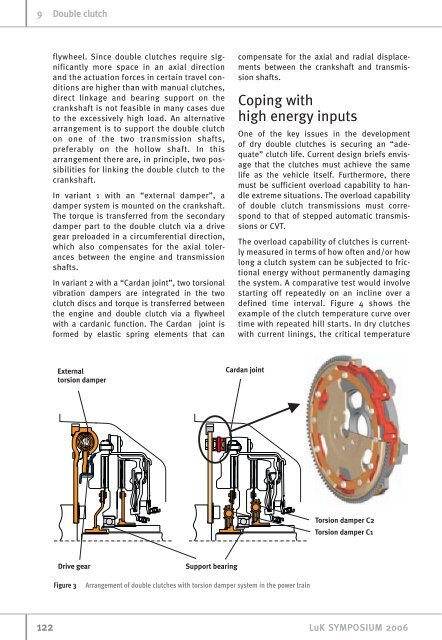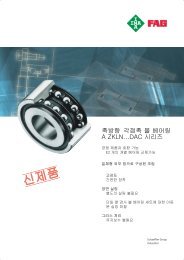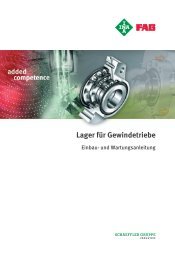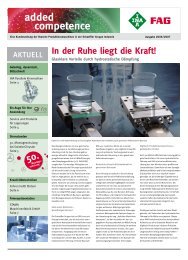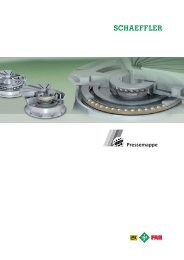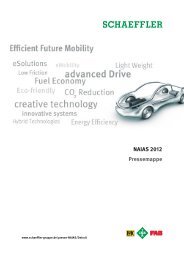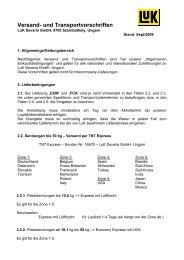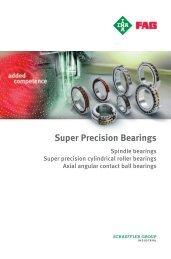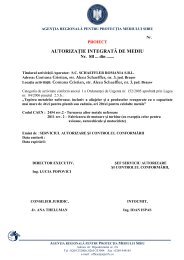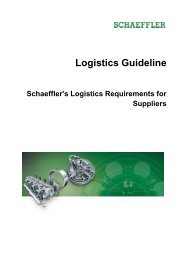Double clutch
Double clutch
Double clutch
Create successful ePaper yourself
Turn your PDF publications into a flip-book with our unique Google optimized e-Paper software.
9 <strong>Double</strong> <strong>clutch</strong><br />
flywheel. Since double <strong>clutch</strong>es require significantly<br />
more space in an axial direction<br />
and the actuation forces in certain travel conditions<br />
are higher than with manual <strong>clutch</strong>es,<br />
direct linkage and bearing support on the<br />
crankshaft is not feasible in many cases due<br />
to the excessively high load. An alternative<br />
arrangement is to support the double <strong>clutch</strong><br />
on one of the two transmission shafts,<br />
preferably on the hollow shaft. In this<br />
arrangement there are, in principle, two possibilities<br />
for linking the double <strong>clutch</strong> to the<br />
crankshaft.<br />
In variant 1 with an “external damper”, a<br />
damper system is mounted on the crankshaft.<br />
The torque is transferred from the secondary<br />
damper part to the double <strong>clutch</strong> via a drive<br />
gear preloaded in a circumferential direction,<br />
which also compensates for the axial tolerances<br />
between the engine and transmission<br />
shafts.<br />
In variant 2 with a “Cardan joint”, two torsional<br />
vibration dampers are integrated in the two<br />
<strong>clutch</strong> discs and torque is transferred between<br />
the engine and double <strong>clutch</strong> via a flywheel<br />
with a cardanic function. The Cardan joint is<br />
formed by elastic spring elements that can<br />
compensate for the axial and radial displacements<br />
between the crankshaft and transmission<br />
shafts.<br />
Coping with<br />
high energy inputs<br />
Figure 3 Arrangement of double <strong>clutch</strong>es with torsion damper system in the power train<br />
One of the key issues in the development<br />
of dry double <strong>clutch</strong>es is securing an “adequate”<br />
<strong>clutch</strong> life. Current design briefs envisage<br />
that the <strong>clutch</strong>es must achieve the same<br />
life as the vehicle itself. Furthermore, there<br />
must be sufficient overload capability to handle<br />
extreme situations. The overload capability<br />
of double <strong>clutch</strong> transmissions must correspond<br />
to that of stepped automatic transmissions<br />
or CVT.<br />
The overload capability of <strong>clutch</strong>es is currently<br />
measured in terms of how often and/or how<br />
long a <strong>clutch</strong> system can be subjected to frictional<br />
energy without permanently damaging<br />
the system. A comparative test would involve<br />
starting off repeatedly on an incline over a<br />
defined time interval. Figure 4 shows the<br />
example of the <strong>clutch</strong> temperature curve over<br />
time with repeated hill starts. In dry <strong>clutch</strong>es<br />
with current linings, the critical temperature<br />
122 LuK SYMPOSIUM 2006


